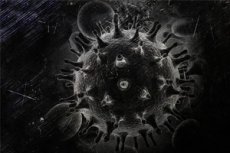New publications
Africans are less susceptible to HIV
Last reviewed: 29.06.2025

All iLive content is medically reviewed or fact checked to ensure as much factual accuracy as possible.
We have strict sourcing guidelines and only link to reputable media sites, academic research institutions and, whenever possible, medically peer reviewed studies. Note that the numbers in parentheses ([1], [2], etc.) are clickable links to these studies.
If you feel that any of our content is inaccurate, out-of-date, or otherwise questionable, please select it and press Ctrl + Enter.

The development of HIV infection is blocked by certain types of proteins that specialize in "unwinding" the double-stranded DNA helix.
Immunity to a particular disease is often genetically transmitted, including to infectious pathologies. For many years it has been reported that some people are completely resistant to HIV due to the presence of a mutation in the CCR5 gene, which encodes a receptor for T-lymphocytes. Thanks to this receptor, the virus gets inside the cell. Specialists have even conducted experiments in which HIV patients were replaced with ordinary stem cells with cells that have a mutation in CCR5. However, it should be noted that this mutation is rare - among no more than 1% of people. Therefore, the option of bone marrow donation with stem cells is not considered. Of course, there is a possibility of using genetic engineering, but this issue is still at the stage of study.
Scientists have noticed that not only the above-mentioned mutation can block the development of HIV infection. Representatives of the University of Manitoba, the Federal Polytechnic College of Lausanne, the Sanger Institute and some other scientific institutions conducted a study on another gene that can prevent the development of infection - CHD1L. It is noted that in humans, this gene can be present in several variations, which also affects the activity of the infection process.
This type of gene was discovered after careful study of almost four thousand human genomes of HIV patients. Interestingly, all genomes with CHD1L were found in people of African descent or their descendants. After the human immunodeficiency virus enters the body with CHD1L, it begins its active reproduction, but at the peak stage there is a drop in activity (the so-called checkpoint), indicating the ability of the body to counteract the infection without any therapeutic interventions. This phenomenon allows us to determine the degree of development of the infectious process, the probability of infection from a virus carrier, etc. Different people do not have the same reference point: this indicator is individual and is directly dependent on the genetic characteristics of the organism. It should be noted that such experiments have been conducted before, but the genomes of people from European countries were mainly studied.
As for people of African descent, it was in them that the correlation between infection activity and variations in the CHD1L gene was revealed: some of its variants were particularly resistant to HIV development.
Through CHD1L, an enzyme is encoded that allows the repair of damaged DNA. This enzyme is able to unfold the double stranded DNA helix, thereby allowing other proteins directly involved in the "repair". Studies of immune cell structures have demonstrated that CHD1L prevents the virus from creating new copies of its genome. However, to date, the full mechanism of this process has not been fully elucidated. Presumably, in the near future, scientists will be able to create a drug with an effect similar to CHD1L.
The full text of the research paper can be found at on the Nature journal page at.
